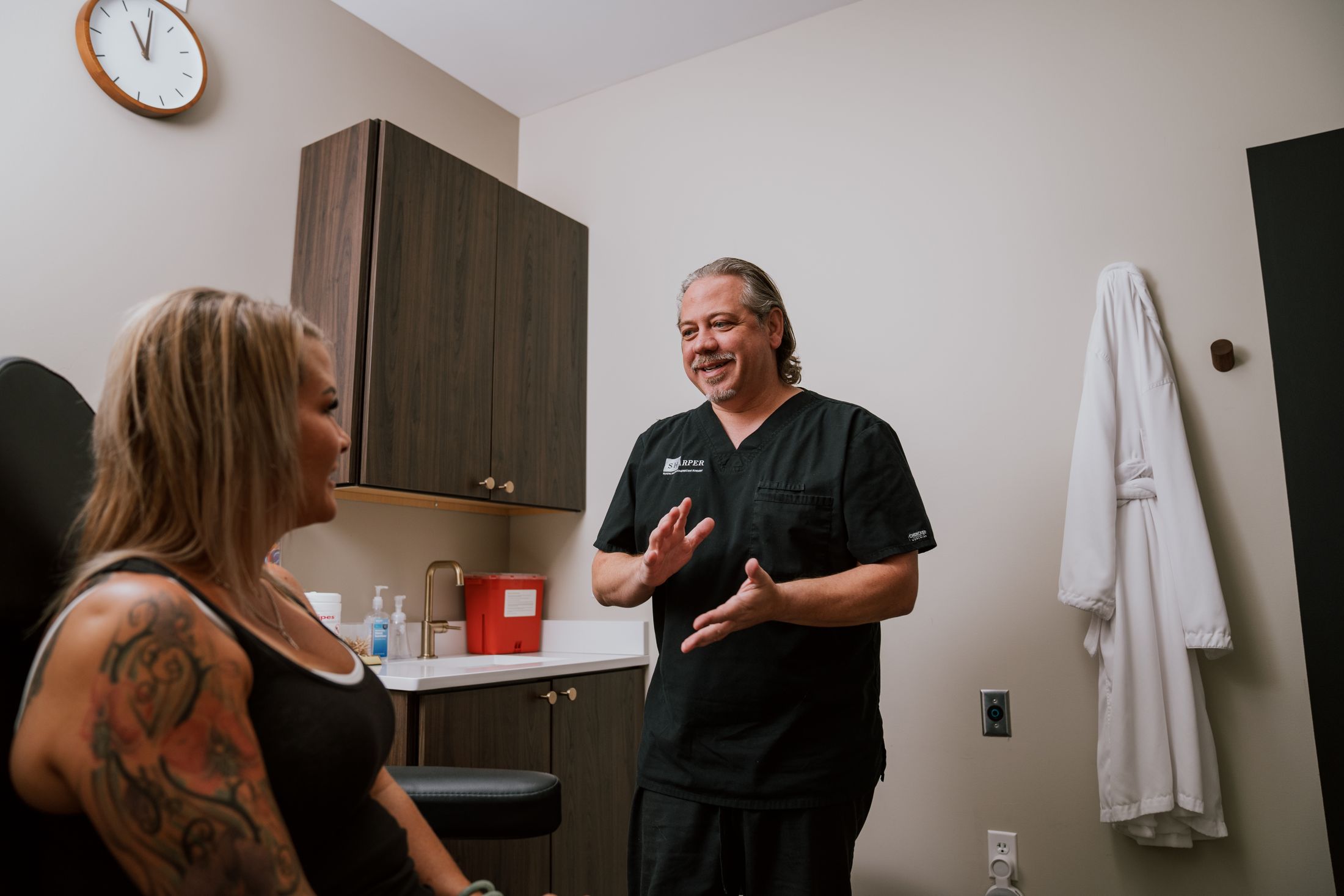- You will have bruising and swelling for the first few weeks following surgery. It will take up to 3 months to resolve all of the swelling. The vast amount of the swelling subsides in the first few weeks.
- You may shower 24 hours after surgery. Please remove the garment and the dressings over the incisions but leave the steri-strips (paper tapes) in place. This will keep the incisions from widening. If you have large “band aid looking” dressings over the steri-strips, you should remove them before you shower. One should not attempt to shower until one’s discomfort level is to the point at which one can remove and replace the support garment. Be aware that one may feel weak after removing the garment and getting a warm shower as the area vasodilates (blood goes to the area) and may make one feel dizzy. Use caution at the first shower and have help readily available.
- You may have some drainage from your incision sites, especially in the first 12-24 hours. This is due to fluid infiltrated at surgery draining out. This may have a red discoloration and may stain the garment significantly. This usually ceases within 24 hours and does not represent “bleeding.” Protect one’s furniture and bedding for the first 24-48 hours with towels.
- Driving may be resumed once one’s reaction times, reflexes, and abilities are back to “normal”. One cannot drive while taking narcotic pain relievers. This usually requires up to 5 to 7 days for most people to be safe behind the wheel.
- Keep compression garments in place except to shower for 3 weeks.
- Sutures in the incisions will be removed in the office in approximately one week.
- Activity should be gauged to how one feels. Early ambulation is strongly encouraged. Strenuous activity can resume in 2 weeks. Elevation of the heart rate and blood pressure should be avoided for the first 2 weeks to minimize swelling and bruising.
- Someone should stay with you the first 24 hours after surgery.
- Temperature elevations from 100-101 degrees in the first 2-4 days are usually due to the collapse of the small air passages in the lungs after general anesthesia. This usually does NOT represent infection in most cases unless accompanied by other signs and symptoms such as redness, unusual drainage, increasing pain, etc. This is usually improved with deep breaths, increased activity and occasionally farcing a cough to re-expand the lungs.
- All pain medication can cause nausea when taken on an empty stomach. Please take every dose with food to avoid this problem. A choice of pain medications has been provided. Please choose one and do not change unless a problem occurs with a particular medication or you wish to “step down” to a lesser strength narcotic. ALL pain medications cause constipation. Please use laxatives or stool softeners as needed.
- Early and frequent walking is necessary to prevent the risk of blood clots that could pass to the heart or lungs resulting in a pulmonary embolus. Significant pain and swelling in the leg or sudden onset of shortness of breath are very important symptoms that demand IMMEDIATE attention.
- If you develop increased redness, warmth, pain, or temperature in excess of 101 degrees, please call our office and have your pharmacy’s phone number available.
If you have any questions that our office has not covered, please call.

